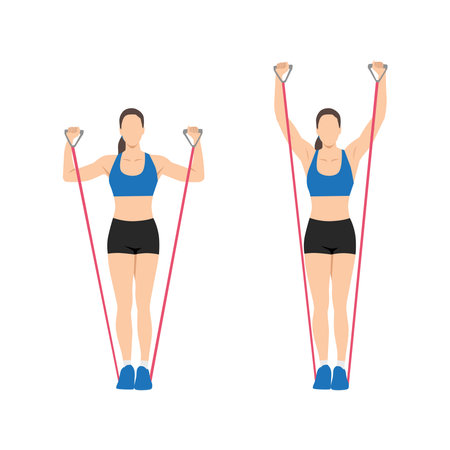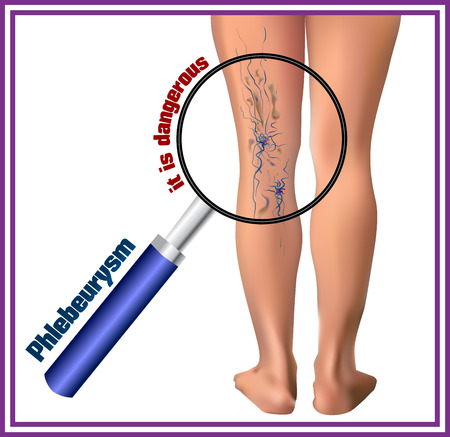Recognizing the Signs of Hypothermia and Frostbite
When you’re out in cold weather, understanding how to spot hypothermia and frostbite early can make all the difference. Both conditions are dangerous, but they don’t look or feel the same—and missing the early warning signs is a real risk during winter hikes, outdoor work, or emergencies. Hypothermia sets in when your body loses heat faster than it can produce it. At first, you might notice uncontrollable shivering, slurred speech, clumsiness, or confusion. As hypothermia progresses, shivering may actually stop—a serious red flag that your body’s core temperature is dangerously low. People often underestimate just how quickly you can get into trouble, especially if youre wet or exposed to wind.
Frostbite, on the other hand, targets your skin and extremities—think fingers, toes, nose, cheeks, and ears. The earliest symptom is usually numbness or tingling. Skin might turn red before becoming pale, grayish-yellow, or even waxy-looking as frostbite gets worse. Blisters may form in severe cases. Unlike hypothermia, frostbite often creeps up silently; people sometimes don’t realize their fingers are freezing because the area becomes numb.
It’s crucial to distinguish between these two: hypothermia is about whole-body cooling and altered mental state, while frostbite is about local tissue damage from freezing. In real-life scenarios—like getting stranded after a winter car breakdown or taking a long hike in unexpected cold—you’ll need to watch for both sets of symptoms. Recognize what you’re seeing so you can act fast; quick identification is your first line of defense against life-threatening cold injuries.
2. Calling for Help and Assessing the Situation
When facing hypothermia or frostbite, knowing when and how to contact emergency services can mean the difference between a full recovery and a life-threatening situation. If you notice warning signs such as intense shivering, confusion, slurred speech, numbness, or skin turning pale, hard, or waxy, it’s time to act quickly. In the United States, dialing 911 is the standard way to reach emergency responders. Stay calm and be ready to provide essential details that will help rescuers respond effectively.
What Critical Information Should You Provide?
| Information Needed | Why It Matters |
|---|---|
| Your exact location (address, GPS coordinates, landmarks) | Helps responders reach you as fast as possible |
| Description of symptoms and number of affected people | Ensures the right resources are dispatched |
| How long person(s) have been exposed to cold | Gives insight into severity of condition |
| Any pre-existing health conditions or medications | Prepares responders for complications |
Assessing Immediate Dangers
Before calling for help, do a quick assessment of your surroundings. Check if you’re safe from further exposure—are you still in freezing temperatures? Is there shelter nearby? Move yourself or the affected person away from wind and wet conditions if possible. Prioritize safety first; sometimes moving someone with severe hypothermia can cause more harm than good, so ask for guidance from dispatch if unsure.
Avoid These Common Mistakes When Calling for Help:
- Don’t leave out location details—use mile markers, trail names, or smartphone GPS if in remote areas.
- Avoid downplaying symptoms; be honest about what you see and feel.
- If cell signal is weak, try texting 911 (available in some regions) or drive to a spot with better reception only if it’s absolutely safe to do so.
The key is clear communication and quick action. By providing thorough information and making smart decisions about safety, you give yourself and others the best chance at survival until professional help arrives.

3. Immediate Actions to Take for Hypothermia
Step 1: Remove Wet Clothing Quickly
When you suspect hypothermia, your first move should be to remove any wet clothing. Wet fabrics draw heat away from the body much faster than dry ones. If possible, help the affected person into dry, insulated layers—even if that means using spare jackets, blankets, or sleeping bags. In an emergency, even wrapping up in a dry tarp or garbage bag is better than staying wet.
Step 2: Seek Shelter and Block the Wind
Next, get out of the elements. Find a windproof shelter—this could be a tent, vehicle, or even a dense stand of trees. Wind chill dramatically speeds up heat loss. If no formal shelter is available, improvise with available materials like branches, tarps, or even snow walls to reduce exposure.
Step 3: Warm the Body Gradually and Safely
Focus on warming the core (chest, neck, head, and groin) rather than extremities first. Use warm (not hot) compresses or heating pads if you have them—never place these directly on bare skin or use hot water, as rapid rewarming can cause dangerous heart arrhythmias. Skin-to-skin contact under shared blankets is also effective in severe situations.
What Not to Do
- Avoid hot baths or direct heat: These can shock the system and cause irregular heartbeat.
- Don’t massage limbs: Rubbing cold arms or legs can push cold blood back toward the heart and worsen core temperature drop.
- No alcohol: It gives a false sense of warmth but actually increases heat loss.
- Don’t let them walk if they’re severely hypothermic: Movement can trigger cardiac issues when body temperature is dangerously low.
Key Takeaway
Treating hypothermia is about slow, steady rewarming and preventing further heat loss. Stay calm, act quickly but gently, and remember that gradual steps make all the difference in saving lives.
4. Immediate Actions to Take for Frostbite
Frostbite is a medical emergency where skin and underlying tissues freeze, most often affecting fingers, toes, nose, and ears. Acting quickly and correctly can make all the difference in preventing permanent damage or loss of limb. Below, we outline effective first aid responses and highlight common mistakes you should avoid if you suspect someone is experiencing frostbite.
Gentle Rewarming Techniques
The number one priority is to move the affected person to a warm, sheltered environment as soon as possible. Remove any wet clothing and replace it with dry, insulated layers. For rewarming, use body heat or immerse the frostbitten area in warm (not hot) water—ideally between 99°F and 104°F (37°C–40°C). Never use direct heat sources like heating pads, campfires, or stoves, as these can burn numb skin without the person realizing it.
Rewarming Steps Comparison Table
| Action | Recommended? | Why/Why Not |
|---|---|---|
| Warm water soak (99–104°F/37–40°C) | Yes | Safest way to gently thaw tissue and restore circulation |
| Rubbing/massaging affected area | No | Can cause more tissue damage due to ice crystals in cells |
| Direct heat (heating pad/fire) | No | Numb skin burns easily; unsafe for frostbitten tissue |
| Body heat (e.g., armpits) | If water not available | Safe alternative for hands/toes if warm water isn’t accessible |
Protecting the Affected Area
Avoid walking on frostbitten feet or toes unless absolutely necessary—this can worsen the injury. Loosely wrap the area with sterile dressings, separating fingers or toes with gauze if possible. Do not break blisters or apply ointments; simply keep the area clean and protected until you reach medical help.
Common Mistakes to Avoid
- Never try to thaw frostbitten tissue if there’s a chance of refreezing. Refreezing causes far more severe damage than initial freezing.
- Avoid rubbing or massaging frozen areas. This can further injure fragile tissues.
- Don’t walk on frostbitten feet unless unavoidable.
- Avoid alcohol or smoking. Both impair blood flow to damaged tissues and slow recovery.
Your Next Move Matters
If you suspect frostbite, act fast but stay calm. Administer gentle first aid as described above and seek professional medical attention immediately—even after successful rewarming. Proper early action maximizes the chances of a full recovery.
5. Prevention Tips: How to Stay Safe in Cold Weather
Layer Up the Right Way
When you’re planning any cold-weather activity, dressing in layers is your first line of defense against hypothermia and frostbite. Start with a moisture-wicking base layer (think synthetic or merino wool) to keep sweat off your skin. Add an insulating middle layer like fleece or down for warmth, and finish with a windproof and waterproof outer shell. Avoid cotton—it holds moisture and will make you colder. Make sure hats, gloves, scarves, and thermal socks are part of your go-to gear list.
Hydration Matters—Even When It’s Cold
It’s easy to forget about drinking water in cold weather, but dehydration can sneak up on you just as quickly as it does in the summer. Cold air is often dry, which increases fluid loss through respiration. Carry an insulated water bottle so your drink doesn’t freeze, and remind yourself to sip regularly—even if you don’t feel thirsty.
Plan Ahead and Know Your Limits
Before heading out, check the local weather forecast (including wind chill), daylight hours, and trail conditions. Let someone know your plans and estimated return time—a standard safety step for outdoor adventures in the U.S. Make a checklist of essential emergency gear: extra layers, snacks high in calories, a headlamp, hand warmers, a map or GPS device, and a fully charged phone with portable charger. If you’re new to winter hiking or camping, start small and build up experience before attempting challenging routes.
Stay Dry at All Costs
Damp clothing rapidly increases heat loss from your body. If you get wet from snow or sweat, change into dry clothes as soon as possible. Consider packing extra socks and gloves in waterproof bags—this simple habit can make a big difference if you end up spending more time outdoors than planned.
Keep Moving—but Don’t Overdo It
Staying active helps generate body heat, but avoid excessive sweating which can leave you chilled when you stop moving. Pace yourself and take short breaks in sheltered areas if possible. If you need to rest for longer periods, find natural windbreaks or set up a tarp for protection.
Bottom Line: Smart Prep Saves Lives
Most cases of hypothermia and frostbite are preventable with good planning and smart habits. Respect the risks of cold weather by gearing up properly, staying hydrated, monitoring conditions, and keeping an eye on yourself and your group for early warning signs of trouble. With these prevention strategies, you’ll be better prepared to enjoy winter adventures safely across America’s great outdoors.
6. What Not to Do: Common Myths and Mistakes
When someone is suffering from hypothermia or frostbite, it’s easy to panic and turn to whatever advice you find online—but not all tips are safe or effective. Let’s clear up some common misconceptions that could do more harm than good. First, never rub frostbitten skin, even if you’ve seen it in movies or read it on the internet. Rubbing can cause microscopic ice crystals to shred already fragile tissue, increasing damage and risk of infection. Similarly, do not use direct heat sources like heating pads, open flames, or hot water to warm frostbitten areas or a hypothermic person. Rapid rewarming with excessive heat can cause burns because numb skin can’t feel pain properly. Stick to body heat or lukewarm water for gradual warming instead.
Alcohol Doesn’t Help
A persistent myth is that drinking alcohol will “warm you up.” In reality, alcohol causes blood vessels to dilate, making you lose body heat faster—not slower. It also impairs your judgment at a time when you need clear thinking most. Skip the whiskey and focus on actual warming techniques.
Don’t Walk on Frostbitten Feet
If feet or toes are frostbitten, avoid walking on them unless absolutely necessary for evacuation. Pressure and movement can worsen tissue damage and increase the chance of losing toes or parts of the foot.
Don’t Thaw If There’s a Risk of Refreezing
One dangerous mistake is thawing frostbitten areas if there’s a possibility they’ll freeze again before getting medical help. Repeated freezing and thawing causes much more severe tissue injury—so only rewarm once you’re sure the affected area can stay warm.
Internet “Hacks” Can Be Harmful
Be wary of viral videos or social media hacks suggesting things like applying ointments, breaking blisters, or using home remedies such as salt baths or vinegar soaks. These can introduce infection or worsen injuries—always stick to proven first aid steps until professionals take over.
In summary, knowing what not to do—and avoiding these common mistakes—is just as important as knowing the right actions. When in doubt, follow established first aid guidelines and get medical help as soon as possible.


